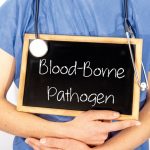
Rare diseases affect 25 to 30 million people in America and there are believed to be around 7,000 of them in total. For a disease to be labeled as rare, it must impact fewer than 200,000 people in a specific rare disease group. Most rare diseases are genetic and affect individuals throughout their lifetime. These genes can be passed on from generation to generation or they can appear randomly. Half of those who are infected with a rare disease are children. While researchers are looking into preventative measures and treatment options, most rare diseases have no plan of treatment in place.
Developing Medication Options for Treatment
With the complexity of the biological mechanisms that make up a rare disease, introducing medication geared toward treatment poses a challenge for researchers. It’s often hard to hold clinical trials given the small number of people afflicted with specific types of rare diseases. As technology continues to advance, biopharmaceutical researchers have been able to shed light on some of the complexities associated with rare diseases. Over the past ten years, more than 230 orphan drugs have been introduced and approved by the U.S. Food and Drug Administration. These new drugs have been able to help those suffering from cancer, cystic fibrosis and other diseases with limited treatment options.
Effect of the Orphan Drug Act of 1983
As researchers sought to learn more about rare diseases, it became evident that there was a lack of focus on treatment options for those suffering from rare diseases. To address the scarcity of medicines, the Orphan Drug Act of 1983 was enacted which gave companies incentives for pursuing the development of treatment options. Since it became law, more than 500 medicines have been approved that are aimed at the needs of those with rare diseases. In addition, doctors have access to more rare disease information.
Early Diagnosis of Rare Diseases
Doctors face a challenge in diagnosing someone with a rare disease as symptoms may show up in time rather than immediately after birth. Most physicians welcome the challenge of rare diseases and the obstacle of finding a treatment plan that works. However given how unusual rare diseases are, it can often be difficult for doctors to diagnosis them given their unfamiliarity. In a survey published in the Journal of Rare Disorders, forty-four percent of patients said the slow process of being diagnosed had a negative impact on their condition. Many patients said it took more than four years for an accurate diagnosis.
The Food and Drug Administration has invested millions recently into rare disease research. In addition, efforts are being made to better educate patients, families, physicians, and specialists on rare diseases. Physicians need to be equipped with knowledge for properly diagnosing patients and need to be able to be aware of specialists for referrals.
Learn About Family History
Know the health history of your family and equip your health care provider with this information. This can guide your doctor as they look for signs and symptoms of rare diseases. For example, rare diseases such as hemophilia, cystic fibrosis, and sickle cell anemia run in families. Your healthcare provider can then inform you on how to examine yourself for symptoms, eat healthily and exercise regularly. They can also provide you with information on how to get proper genetic testing for diagnosis and treatment. Genetic testing can help doctors detect how your body breaks down medications by taking a closer look at liver enzymes. Doctors will better be able to find the proper dosage of medication and allow patients to avoid some side effects.
Preventative Measures Patients Can Take
You have more control over your medical future than you may realize. Ridding your body of excess body fat through exercise and healthy eating habits can help you avoid a number of cancers such as breast, uterine and stomach cancers. Calculate your body mass index and make sure it falls in the range of 18.5 to 24.9 to lower your health risks. Avoid packaged and processed food by opting for whole food selections.
Another way to reduce your risk of disease is by getting enough rest. Your body works to heal and repair cellular damage while you are asleep. For this reason, you should get at least seven hours of sleep each night. Monitor how much alcohol you drink. Consuming alcoholic beverages can lead to cancers and other health problems. Women should limit themselves to one drink a day. Men should have no more than two drinks a day. Avoid smoking which is the leading cause of cancer death. Lastly, remove chemical products that can be found in cleaning supplies, medications, and cosmetics from your home. These can disrupt the way your endocrine system functions making you susceptible to disease.
Doctors are continuing to work on advancements as they strive to learn more about rare diseases. As more money and energy is being invested in research, doctors are making efforts to develop new medications for treatment. Efforts are also being made to further educate medical professionals so patients can be diagnosed earlier. However, it’s important to remember that the responsibility to fight rare diseases doesn’t fall solely on the doctor’s shoulders as patients can take preventive steps to improve their own quality of life.
About The Author:
Stacey Smith is a freelance health writer. She is passionate to write about women’s health, dental health, diabetes, endocrinology and nutrition and provides in-depth features on the latest in health news for medical clinics and health magazines.


